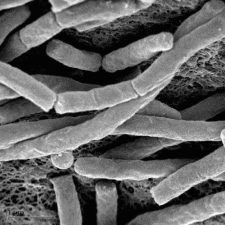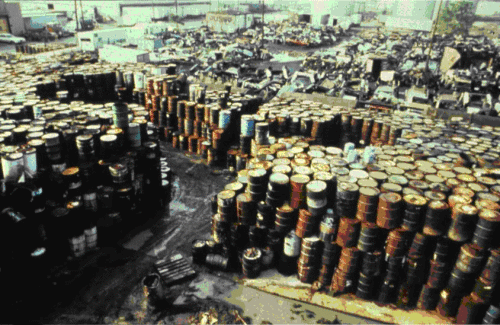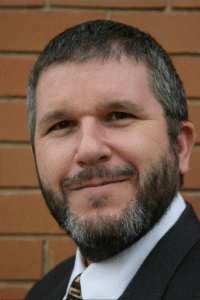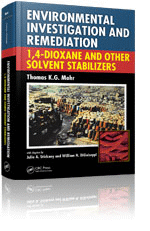On-Demand Webinars
1,4-DIOXANE: Part 1:
Occurence, Fate, Transport and Remediation
 The emerging contaminant 1,4-dioxane is particularly challenging because of its high solubility, minimal binding to soils, invulnerability to hydrolysis, and because natural biodegradation processes occur rather slowly. This makes 1,4-dioxane much more mobile and persistent than any other contaminant at solvent release sites. The emerging contaminant 1,4-dioxane is particularly challenging because of its high solubility, minimal binding to soils, invulnerability to hydrolysis, and because natural biodegradation processes occur rather slowly. This makes 1,4-dioxane much more mobile and persistent than any other contaminant at solvent release sites.
Until recently, 1,4-dioxane has largely evaded recognition in the environment because it has not been part of traditional analyte lists. 1,4-dioxane is a mainly used as a stabilizer for the solvent methyl chloroform (1,1,1-trichloroethane), but it is also found in select inks, adhesives, and cosmetics. In addition, 1,4-dioxane is often present in recycled water as a by-product of ethoxylated surfactants used in household detergents, shampoos, and sundries. As analyses have been made for this emerging contaminant, it is detected in quantities ranging from small to massive. Sometimes called a "ROD Re-opener," 1,4-dioxane is very likely to be present at solvent release sites where 1,1,1-trichloroethane was used or at a wide range of other industrial sites, and especially at solvent recycling facilities and landfills.
This webinar provides a comprehensive assessment of 1,4-dioxane uses, occurrence at solvent release sites, problems caused by the nature of its fate and transport, challenges for sampling and laboratory analysis, toxicology and risk assessment, and regulation. This webinar examines the physical and chemical properties of 1,4-dioxane in detail and the implications for remedial design. Attending this webinar will provide you with information about the growing market for 1,4-dioxane remediation.

Among the webinar highlights:
- 1,4-Dioxane: Uses and Occurrence, and Which Solvents Were Not Stabilized with 1,4-dioxane
- Chemical Properties of 1,4-Dioxane Governing Fate and Transport
- Laboratory Analysis of 1,4-Dioxane - Challenges and Solutions
- 1,4-Dioxane Toxicology and Risk Assessments
- Disparity in Regulation of 1,4-Dioxane among State Agencies
The benefits to participants include:
- Obtaining your information directly from the author of the leading reference book on 1,4,dioxane, and benefit from his constantly growing knowledge base.
- Learning about the counter-intuitive and subtle aspects of this emerging contaminant.
- Acquiring an appreciation for the technical, policy, and strategic issues surrounding the late discovery of 1,4-dioxane at solvent release sites.
- Receiving a bibliography of the most important reference papers on the topic of 1,4-dioxane occurrence and remediation.
Testimonial:
Tom Mohr hit it out of the park for a webinar, in my opinion. His devotion and thoroughness in the field of solvent stabilizers and 1,4-dioxane in particular, is incredible, and we are fortunate that he is so generous with his knowledge.
- Mark Levorsen, Principal Hydrogeologist, URS Corporation
Instructors Bio
 Thomas Mohr is the principal author of the acclaimed book, "Environmental Investigation and Remediation: 1,4-dioxane and Other Solvent Stabilizers in the Environment" (by Mohr/DiGuiseppi/Stickney), published by Taylor and Francis Group (CRC Press) in 2010. The book was the culmination of seven years of research and networking on the subject of 1,4-dioxane and other solvent stabilizers, and is now the leading reference on the subject, with copies housed in more than 100 university and corporate libraries in more than a dozen countries. Thomas Mohr is the principal author of the acclaimed book, "Environmental Investigation and Remediation: 1,4-dioxane and Other Solvent Stabilizers in the Environment" (by Mohr/DiGuiseppi/Stickney), published by Taylor and Francis Group (CRC Press) in 2010. The book was the culmination of seven years of research and networking on the subject of 1,4-dioxane and other solvent stabilizers, and is now the leading reference on the subject, with copies housed in more than 100 university and corporate libraries in more than a dozen countries.
Mohr continues his work on 1,4-dioxane and has given many conference presentations and webinars on 1,4-dioxane. He is advising an ESTCP grant project team led by CDM's Pat Evans that was funded to pilot test an innovative in situ chemical oxidant release technology targeting 1,4-dioxane. His most recent publication was a 2012 article in EPA's Technology News and Trends on point-of-entry treatment systems (POETS) to remove 1,4-dioxane from domestic wells. Mohr has been retained as an expert witness for several 1,4-dixoane groundwater contamination court cases in California and Florida. Mohr was the statewide President of the Groundwater Resources Association of California in 2006 and 2007 and served on GRA's Board of Directors for 10 years.
Before focusing on the contaminant hydrogeology and forensic aspects of chlorinated solvent release sites, Mohr worked extensively on landfill groundwater contamination, landfill management, and landfill gas-to-energy projects for two California municipalities. Mohr has published on improvements to laboratory methods for 1,4-dioxane analysis, perchlorate isotope forensics, leveraging stable isotopes of water for investigating origins of nitrate contamination, anaerobic biodegradation of gasoline, and other topics.
Tom works at the Santa Clara Valley Water District as Senior Hydrogeologist where he manages county-wide groundwater monitoring and salt and nutrient management plans, and was previously the District's Solvents and Toxics Cleanup Liaison. He was the principal investigator for the District's Study of Potential for Groundwater Contamination from Past Dry Cleaner Operations in Santa Clara County, and was the District's project manager on a major perchlorate case that impacted hundreds of domestic wells.
Mohr served in the Peace Corps in Botswana where he planned and managed labor-based drought relief projects that employed 2,200 people, including hand dug wells and building dams, and distributing food donated by USA. He studied at UC Davis, and makes his home in Santa Clara with his wife and three young children.
 "Environmental Investigation and Remediation: "Environmental Investigation and Remediation:
1,4-dioxane and Other Solvent Stabilizers in the Environment"
by Mohr/DiGuiseppi/Stickney,
published by Taylor and Francis Group (CRC Press) in 2010
"Tom Mohr's book on 1,4-Dioxane is the most thorough and practical treatise on the subject - an amazingly complete book" -Dr. Robert W. Cleary, Instructor, The Princeton Groundwater Courses, Tampa, Florida.
"Mohr's extremely well documented book on 1,4-dioxane is of great value to all involved in the on-going challenges to restore groundwater to its highest beneficial use." -Dr.Michael Kavanaugh, P.E., Geosyntec Consultants, Oakland, California
"You won't find the 1,4-dioxane book on my reference shelves - I keep it on my desk." -Dr. Stanley Feenstra, Applied Groundwater Research Ltd., Missisauga, Ontario, Canada Co-author of Dense Non-Aqueous Phase Liquids
"Mohr's Dioxane book has incredible information and is well-written and well-referenced. It is rare that a book like this comes along" -Dr. Robert D. Morrison, DPRA, Hawi, Hawai'i. Author of Environmental Forensics - Principles and Applications, and Environmental Forensics - the Contaminant Specific Guide.
| Fee: |
299.00 USD Per Webinar
|
| Materials and Downloads: |
Session Slides (PDF)
Record of Attendance Form (PDF)
|
Number of
Participants: |
AS OF JUNE 1, 2020, WEBINARS ARE PRICED FOR INDIVIDUALS WORKING ALONE. Pricing is discounted for individual registrations for people working alone.
|
Continuing
Education
Certificates: |
$14.95 each. Official CEU certificates are available as an option. After successful completion of this webinar, a link will be provided to order a certificate.
|
| Access: |
On-demand, anytime 24/7. |
| Discounts: |
Buy 3 on-demand webinars, and get 3 on-demand webinars for free!
|
| Duration: |
90 minutes |
| PDH Earned: |
1.5 hours |
| |
|
| Instructor(s): |
Tom Mohr |
|
Become A Member
It's Free, It's Easy and as a
Member you'll enjoy...
- Exclusive Videos
- Special Pricing
- And Much More
|
|
Join
|
Learn More
|
Association of Environmental
& Engineering Geologists
|